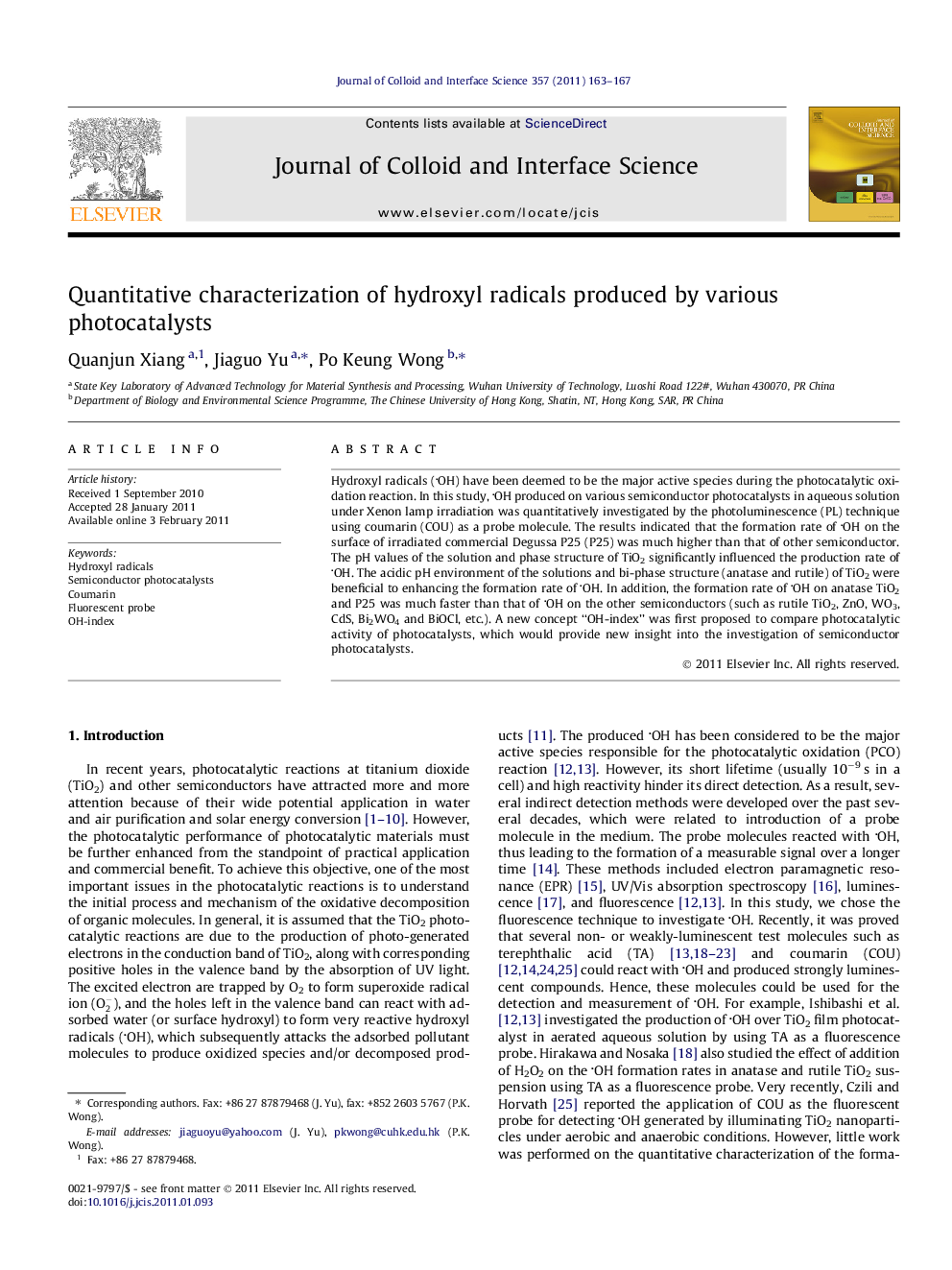| Article ID | Journal | Published Year | Pages | File Type |
|---|---|---|---|---|
| 608562 | Journal of Colloid and Interface Science | 2011 | 5 Pages |
Hydroxyl radicals (OH) have been deemed to be the major active species during the photocatalytic oxidation reaction. In this study, OH produced on various semiconductor photocatalysts in aqueous solution under Xenon lamp irradiation was quantitatively investigated by the photoluminescence (PL) technique using coumarin (COU) as a probe molecule. The results indicated that the formation rate of OH on the surface of irradiated commercial Degussa P25 (P25) was much higher than that of other semiconductor. The pH values of the solution and phase structure of TiO2 significantly influenced the production rate of OH. The acidic pH environment of the solutions and bi-phase structure (anatase and rutile) of TiO2 were beneficial to enhancing the formation rate of OH. In addition, the formation rate of OH on anatase TiO2 and P25 was much faster than that of OH on the other semiconductors (such as rutile TiO2, ZnO, WO3, CdS, Bi2WO4 and BiOCl, etc.). A new concept “OH-index” was first proposed to compare photocatalytic activity of photocatalysts, which would provide new insight into the investigation of semiconductor photocatalysts.
Graphical abstractThe formation rates of hydroxyl radicals on various photocatalysts were quantitatively characterized by photoluminescence technique and a new concept “OH-index” was first proposed to compare relative activity of photocatalysts.Figure optionsDownload full-size imageDownload high-quality image (127 K)Download as PowerPoint slideResearch highlights► OH produced on various photocatalysts was quantitatively characterized by PL method. ► The formation rate of OH on the surface of P25 is higher than that on other semiconductors. ► The acidic solution and bi-phase structure of TiO2 can enhance the formation rate of OH. ► A new concept “OH-index” was first proposed to compare relative activity of photocatalysts.
